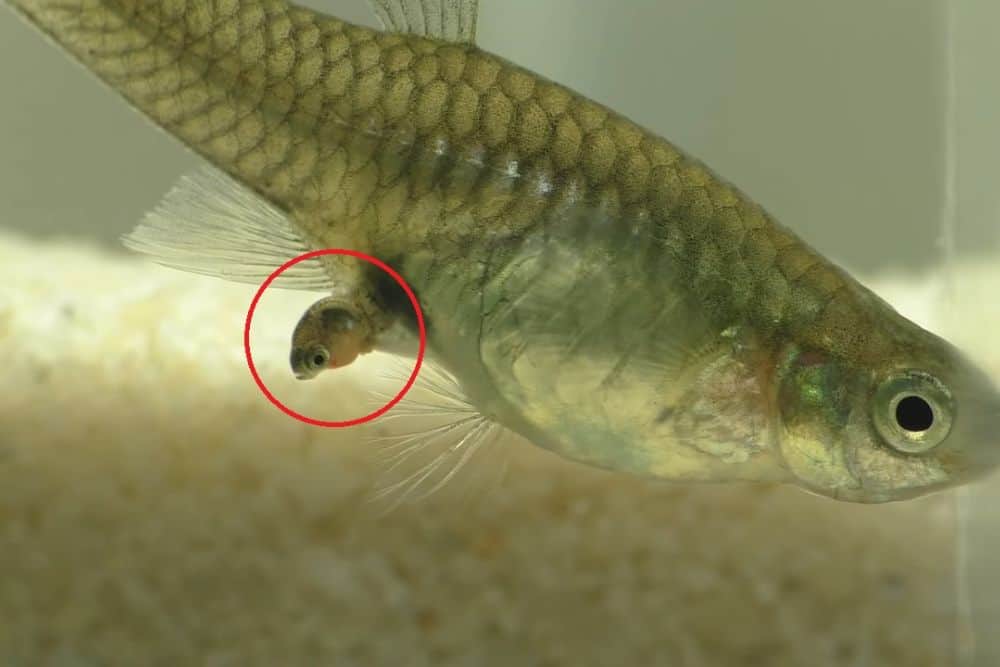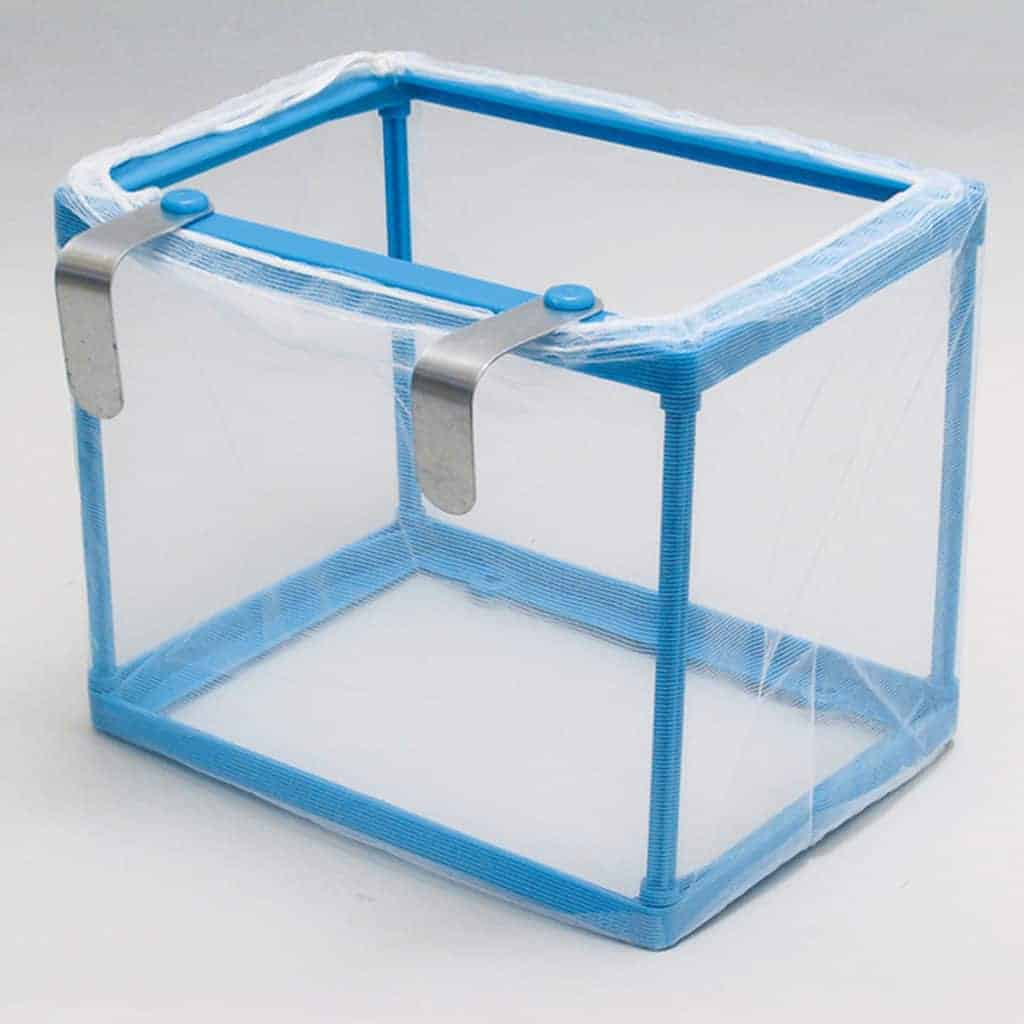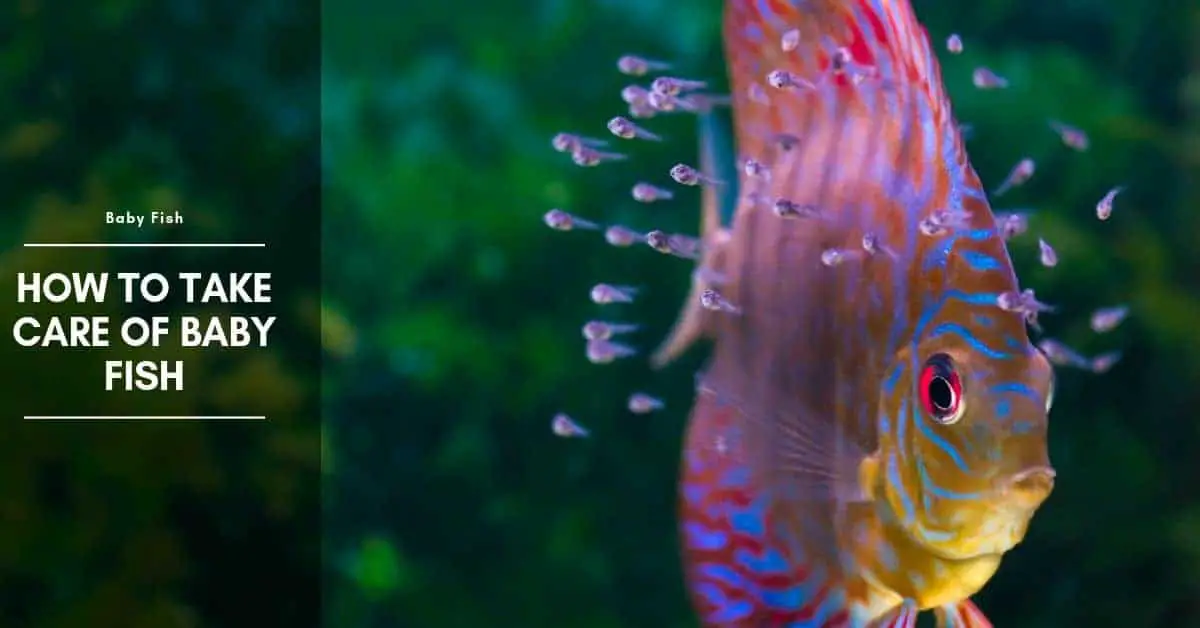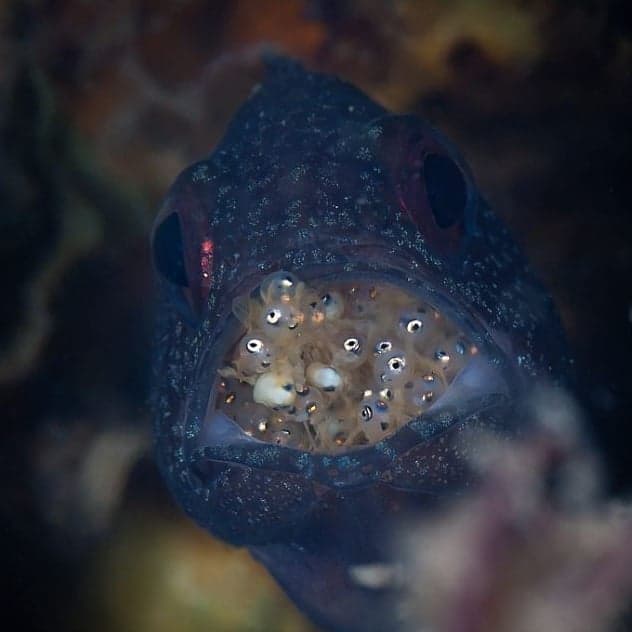One of the most challenging yet rewarding aspects of fishkeeping is to breed your own fish, have baby fish, and take care of them. Think carefully about which fish you should breed and where you will house the spawning fish, and decide how many fry you can comfortably cope with and how you will feed them. Make a record of your successes and failures, so that future breeding attempts go more smoothly.

Match Fish For Spawning
Many fish spawn in pairs, but some species form small breeding groups – such as a male and two females, or vice versa – while others spawn communally in shoals. You will need to sex your stock in order to be sure that you have fish of each sex. Sexing is easy with species that display sexual dimorphism.
However, some fish, such as cherry barbs and tetras, are visually alike and hence impossible to sex outside the breeding period. Starting with at least six individuals of such species should guarantee that there is at least one pair in the group.
Compatibility—the ability of a pair to interact favorably and spawn successfully – is unlikely to be a problem with barbs, tetras, and other species in which the sexes only come together briefly to mate. However, it is more of an issue in species that display a degree of shared parental care, such as angelfish or discus, since they necessarily spend more time with their partners.
A pair of discus, for example, will simply refuse to breed if they are incompatible. Changing their partners or, better still, rearing the fish in a group so that they can choose their own mates as they mature should overcome this difficulty. By watching the behavior of the fish, you should be able to see signs of compatibility, because naturally matched pairs will swim together and remain in relatively close contact.
Alternatively, you can avoid these problems altogether by buying a proven spawning pair from an aquarium store. The males of some larger species, such as a number of the Central American cichlids, will become aggressive at spawning time.
If the female is harassed by her intended partner, she may lose her breeding condition, and it may be necessary to remove the male for a period of time to enable her to recover. Incompatibility is not something to be taken lightly—in extreme cases, a male may bully a female to death.
A Guppy Having Babies
Conditioning Your Fish For Spawning
Having chosen your breeding stock, the next task is to condition them for spawning. This involves feeding them well, especially with protein-rich foods, so that they produce plenty of healthy sperm and eggs.
For those egg-laying species that spawn seasonally in nature, it may also involve altering conditions in the tank to mimic the environmental changes that occur in the wild. With Amazonian species, which breed when heavy rains raise the water level in their habitat, to 90°F (32°C).
The disadvantage of speeding up gestation is that higher temperatures also quicken the rest of the life cycle of the fish, thus shortening their life-span. Although most livebearers produce offspring readily, even in a community tank, few of the fry survive to adulthood because they are eagerly devoured by other tank occupants – often including their own mother.
Spawning Box
To avoid this unnecessary carnage, you can transfer the pregnant female to a breeding trap, or spawning box. The breeding trap, which hooks over the side of the tank or floats freely in the water, has a birthing chamber that houses the female.
Small holes or slits in the floor or walls of the chamber allow newborn baby fish fry to escape into a secondary chamber, where they can develop in safety, out of reach of the female, and separate from the main tank. Once they have grown too large to be eaten, the fry can be released into the main aquarium.
Avoid buying small breeding traps, since gravid females will become distressed if they are confined in too small a space. Do not wait until immediately before the birth before transferring the female, since this is likely to cause her to abort her brood.
The ideal time to move her is about a week before the brood is due. spawning can be triggered by making a partial water change and dropping the water temperature slightly.

Feed The Fish With Live Food
Feeding extra live foods will also help since invertebrates naturally become more numerous in the floodwaters at this time. In contrast, annual killifish can be brought into breeding conditions by lowering the water level and slightly increasing the temperature, since in the wild they spawn when the sun begins to dry up the pools in which they naturally live.
API STRESS ZYME Freshwater and Saltwater Aquarium Cleaning Solution 16-Ounce Bottle
API ACCU-CLEAR Freshwater Aquarium Water Clarifier 4-Ounce Bottle
12% OffAPI GENERAL CURE Freshwater and Saltwater Fish Powder Medication 10-Count Box
15% OffIt is usually possible to tell from the changing appearance and behavior of the fish that spawning is imminent. The males may take on a more intense breeding coloration and show aggression toward one another. They will actively pursue the females, whose body becomes swollen with developing eggs.
In some species, you may also notice that the fish perform courtship rituals, or carefully clean spawning sites, such as rocks or leaves. This is the time to transfer the fish to a spawning tank. In territorial species that spawn in pairs or small groups, always move the females first to allow them to settle in the tank before the males are introduced. Communal spawners can be introduced as a shoal.
Breeding livebearers
Livebearers need little encouragement to breed in aquariums. Like egg-layers, they benefit from protein-rich conditioning foods, but many originate from relatively stable habitats and are not seasonal spawners, so they do not need environmental changes to trigger spawning.
Water Temperature
The water temperature does, however, influence the gestation period. For example, at 77°F (25°C), gestation in guppies takes 28 days, but this figure falls to just 19 days when the temperature is raised.
Fish Rearing Tanks
Most breeders prefer to use a completely separate tank for rearing the fry of livebearers. The female can give birth there in a breeding trap, before being moved back to the main aquarium after she has recovered. A special V-shaped partition can be inserted into the tank as an alternative to a breeding trap.
This has a narrow gap at the apex of the V through which the baby fish fry can slip. Alternatively, a net with a wide mesh can be used to separate the female from her offspring. When the female has been removed, the fry can be reared in the tank on their own.
A power filter cannot be used safely in any tank that is to house young fish, whether livebearers or egg-layers because the small baby fish are likely to be sucked into the filter. Filtration must be gentle, so use a simple sponge filter instead, possibly in combination with an undergravel filter.
Prime the filter in advance with a culture of beneficial bacteria, so that it has time to become active before any fish are introduced. The water must be well aerated, and the heater should have a special protective cover so that the fry do not burn themselves.
Can baby fish live without a filter?
No, baby fish need filtration just like we need oxygen. Without it, the water will get dirty very quickly and cause ammonia to spike up and become toxic to your fish.
That’s why we recommend starting out with a filter and then adding a bigger filtration when needed.
How often should I change the filter cartridge?
We recommend changing your filter cartridges once every 2 to 4 weeks. This is dependent on how many fish you have and how dirty your tank water gets. If you notice your filter slowing down or not working as well, that’s usually a good sign it needs to be cleaned and/or replaced.
Here’s a tip: when you change your filter cartridge, write the date on it so you know how long it’s been in there. That gives you an idea of how often to change it and how much nitrates are building up inside the cartridge.
What kind of filter do I need?
This depends on what size tank you have and how many fish you keep. Generally speaking, you should get a filter that’s rated for the size of tank you have. You can always buy an undersized filter if you think your tank will be low maintenance and require less frequent cleaning.
What do baby fish eat?
An essential part of establishing a successful breeding regimen is making sure that you have sufficient stocks of the correct foods to nourish the young fish. Tiny fry will initially need to be given a specially formulated liquid fry food or microscopic aquatic creatures called infusoria.
How To Make Infusoria For Baby Fish?
You can culture infusoria yourself by placing a glass jar containing chopped lettuce and water in bright light, perhaps on a windowsill. After a few days, the water will turn pinkish as it becomes colonized by infusoria.
Small amounts of this water can then be sprayed on the surface of the rearing tank. As the baby fish grow, they can progress to newly hatched brine shrimp. Larger fry can be given brine shrimp as a first food, and subsequently small Daphnia and ground flakes.
How Often Do You Feed Fry Fish?
Young fish need to be fed two, three, or even four times a day. They are not particularly mobile at this stage, so it is vital that food is evenly distributed throughout the tank and within easy reach; otherwise their growth will be checked.
The sponge filter, which should be mature by this stage, will have tiny edible particles on it that the young fish can nibble. The gentle currents that such a filter creates, running off an airline, will help to waft floating food scraps toward the fry.
Dangers of overpopulation
Successful breeding can leave you with a large number of fry to care for. Regular partial water changes, perhaps as often as once a day, will be vital to make sure that the water quality does not deteriorate as a result of accumulated waste and uneaten food.
As the fry increase in size, a more efficient filtration system can be incorporated into their tank. Eventually, the fry will need to be either moved to a much larger aquarium or divided between several different tanks, to give them sufficient growing space. Overcrowding the fish may stunt their growth and induce stress-related illnesses, as well as making it more likely that there may be a sudden, and potentially fatal, decline in water quality.
Specialist Requirements For Baby Fish
Some fry have special rearing needs. A rearing tank for the fry of gouramis and related species needs to be kept covered so that the air immediately above the surface is at approximately the same temperature as the water. This is because the fish have anabantoid organs, which allow them to breathe air directly.
If the air above the water is too cold when their anabantoid organs start to function at about three weeks of age, the baby fish could become fatally chilled when they try to breathe at the surface. With territorial species, separate young males before they start to become aggressive toward the rest of the brood.
Male Siamese Fighting Fish, for example, must be kept apart by the time they are three months old. Young livebearers should also be separated as soon as you can sex them, to prevent littermates from interbreeding. A female livebearer can store sperm in her body throughout her life, so any unplanned mating like this will endanger your breeding program since you will not know for sure which male sired the fry.
Avoid housing together the young of related species, such as swordtails and platies, which will readily crossbreed, or hybridize. It is difficult to predict the appearance of hybrids, and they tend to be less attractive and less fertile than the species from which they originate.
Mouth-brooders
Mouth-brooders, such as the Pearl of Likoma cichlid, produce fewer but proportionately larger offspring than egg-laying species, such as the Firemouth Cichlid. Being larger, young mouth-brooders are easier to feed, and since there are fewer of them, there is less risk of overcrowding the tank or polluting the water. You may periodically have to remove the largest, fastest-growing members of a brood so that they do not cannibalize smaller siblings.
Breeding Tips
- Thoroughly research the breeding habits of your fish.
- When choosing breeding stock, select young, healthy adults, with good markings, fin shape, and coloring.
- With fish that spawn in small groups or shoals, rather than in pairs, make sure that you have a large enough group, with the right gender-mix, to ensure breeding success.
- Successful breeding may result in more fry than you can adequately care for, so find alternative homes for surplus fry in advance.
- Avoid allowing different species to breed together (hybridize). Fellow breeders will have little interest in the resulting offspring.
Spawning Tanks For Egg-Laying Species
The spawning tank must reflect the breeding habits of the fish it is to house. Include plants, among which the female can seek refuge if the male becomes aggressive. If the adults are likely to eat their eggs or fry, they should be transferred back to the main aquarium after spawning, leaving the eggs to hatch on their own. Filtration in this type of tank is gentle, so it is best not to feed the adults while they are in the tank, to avoid polluting the water unnecessarily.
Egg-scatterers
A layer of marbles on the tank floor will help to prevent the adult fish from eating the eggs, which will fall between the marbles and out of reach. Alternatively, a mesh net across the tank can be used to let the eggs fall safely through.
Egg-depositors
Fish that deposit eggs on plant leaves can be persuaded to lay them on an artificial spawning mop instead. With fish that spawn over several days, the mop can be replaced regularly, and the eggs hatched safely in a separate tank.
Cave-spawners
These fish require an artificial cave, such as a clean, partially buried clay flowerpot or a section of coconut shell. Alternatively, you can build a cave out of rocks. Cave-spawners may also breed successfully in the main aquarium.
Egg-buriers
A soft peaty substrate is essential for fish that bury their eggs. After spawning, the peat, complete with eggs, can be removed and stored in a warm, dark place. Immersing the peat in tank water again will cause the eggs to hatch.
Bubble-nest builders
A glass lid will prevent drafts from damaging the nest or chilling the eggs, and keep the air over the water warm and humid. Provide tall plants to which the nest can be attached. These fish may also breed successfully in the main aquarium.

Hi, my name is Sean, and I’m the primary writer on the site. I’m blogging mostly about freshwater and saltwater aquariums, fish, invertebrates, and plants. I’m experienced in the fishkeeping hobby for many years. Over the years I have kept many tanks, and have recently begun getting more serious in wanting to become a professional aquarist. All my knowledge comes from experience and reading forums and a lot of informative sites. In pursuit of becoming a professional, I also want to inspire as many people as I can to pick up this hobby and keep the public interest growing.
Read more about Sean.
Please join also my Facebook group.





















